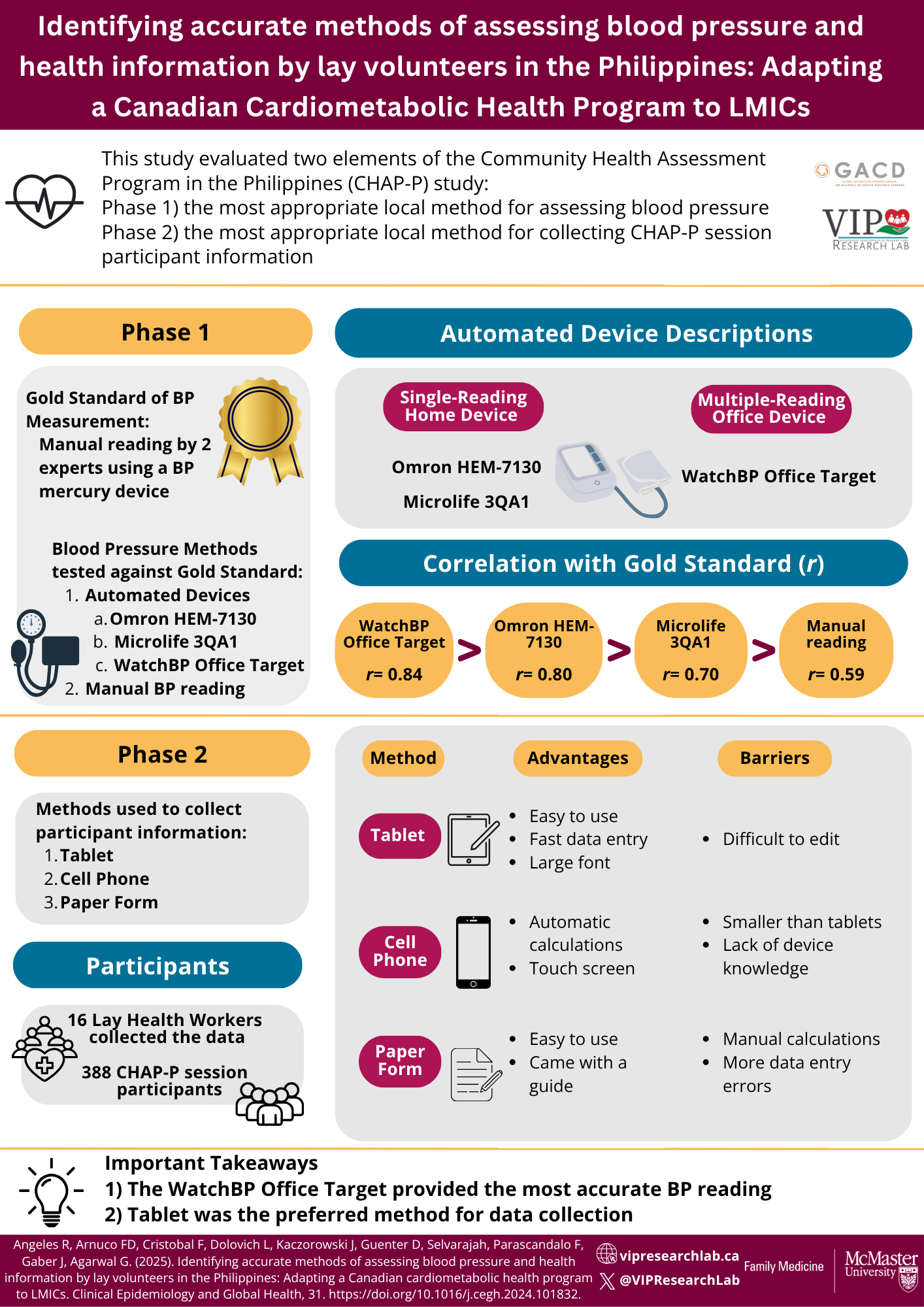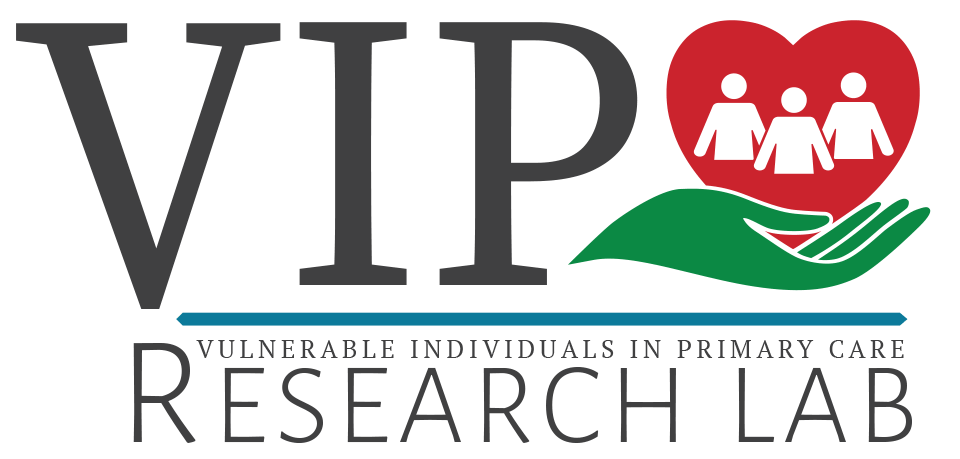
This is an infographic titled “Identifying accurate methods of assessing blood pressure and health information by lay volunteers in the Philippines: Adapting a Canadian Cardiometabolic Health Program to LMICs”. Below the title, there is information on the study design and two logic to the right of the text. One is a logo for the VIP Research Lab and the other is for the Global Alliances for Chronic Diseases (GACD). The study evaluated two elements of the Community Health Assessment Program in the Philippines (CHAP-P) study. Phase 1 evaluated the most appropriate local method for assessing blood pressure. Phase 2 evaluated the most appropriate local method for collecting CHAP-P session participant information.
The next section of the infographic goes into details about Phase 1. The Gold Standard for BP measurement is manual reading by 2 BP experts using a BP mercury device. Other blood pressure methods that were tested against the gold standard include automated devices such as the Omron HEM-7130, Microlife 3QA1, and WatchBP Office Target, and also manual BP readings. The Omron HEM-7130 and Microlife 3QA1 automated devices are single-reading home devices and the WatchBP Office Target is a multiple-reading office device. The correlations (r) for these devices with the gold standard are also stated in this section. The WatchBP Office Target has a correlation coefficient of 0.84, the Omron HEM-7130 has an r of 0.80, the Microlife 3QA1 has an r of 0.70, and the manual reading has an r of 0.59.
The next section of the infographic describes Phase 2 of the study. On the left of this section, the methods and participants are described. Methods used to collect participant information include tablets, cell phones, and paper forms. 16 lay health workers collected the data from 388 CHAP-P session participants. To the right of this information are the advantages and disadvantages of each collection method. Tablets are easy to use, good for fast data entry and have large fonts, however, they can be difficult to edit. Advantages of cell phones include being able to have automatic calculations and a touch screen, but disadvantages include being smaller than tablets and a lack of device knowledge. Lastly, the paper form was easy to use and came with a guide, however, it required manual calculations and was susceptible to more data entry errors.
Important takeaways, listed at the bottom of the infographic include 1) the WatchBP Office Target provided the most accurate BP reading and 2) the tablet was the preferred method for data collection.
At the bottom, twitter handles and website URLs for the VIP research lab are provided. The citation for the study is included at the bottom as well. A logo for the McMaster University Department of Family Medicine is also included here.
